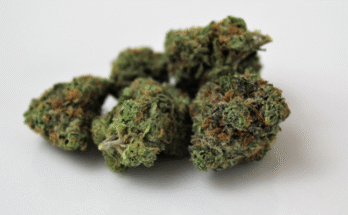Why are so many people today feeling anxious, inflamed, exhausted, and disconnected?
We’ve got endless treatments, diagnoses, and supplements. But for many, the underlying issue remains unresolved.
At High & Polite, we believe one of the missing pieces might be something most people have never even heard of:
Endocannabinoid tone – the overall balance and function of your body’s cannabinoid system.
It’s not just about how much THC or CBD you’re using. It’s about whether your whole system is working in tune.
Let’s break it down.
What Is the Endocannabinoid System
The endocannabinoid system (ECS) is a complex network in the human body that helps maintain homeostasis.
Homeostasis is a state of internal balance that your body is always naturally trying to achieve. It’s involved in regulating mood, sleep, pain, appetite, digestion, immune response, memory, and more.
The ECS is made up of:
- Endocannabinoids – chemicals your body makes (like anandamide and 2-AG)
- Receptors – mainly CB1 (in the brain) and CB2 (in the body and immune system)
- Enzymes – which create and break down endocannabinoids (like FAAH and MAGL)
The ECS helps you adapt, regulate inflammation, recover from stress, and keep everything in balance. So it’s pretty important, to say the least.

What Is Endocannabinoid Tone, Really?
If the endocannabinoid system (ECS) is the hardware (the network of receptors, enzymes, and molecules running throughout your body) then endocannabinoid tone is the software state it’s operating in.
It’s not just whether your ECS exists (it does), but how well it’s functioning in real time.
Endocannabinoid tone includes:
🧪 1. Endocannabinoid Levels
Your body makes its own cannabinoids – like anandamide and 2-AG – which are responsible for regulating mood, pain, appetite, memory, and more. If your body isn’t producing enough (or is breaking them down too fast), your system goes out of balance.
Low anandamide levels, for example, are linked to anxiety, depression, and chronic pain.
📡 2. Receptor Sensitivity & Density
Cannabinoids need somewhere to land, which is where CB1 and CB2 receptors come in. The number and responsiveness of these receptors determine how well your body can “hear” and respond to cannabinoids, whether natural or plant-based.
Too much THC over time can actually cause receptor downregulation, meaning the system becomes less sensitive and less effective.
🧬 3. Enzyme Activity
Your body uses enzymes like FAAH and MAGL to break down cannabinoids. If these enzymes are overactive, your endocannabinoids get degraded too quickly, leaving you depleted and dysregulated.
CBD, interestingly, inhibits FAAH – allowing anandamide to stay active for longer.
⏱️ 4. Rhythm & Timing
Your ECS isn’t meant to fire all the time. It’s designed to activate on demand. Like when you’re stressed, inflamed, or need to reset. When your tone is healthy, this timing is tight and efficient.
If the rhythm is off (i.e too much stimulation, too little recovery) your body loses its ability to self-regulate.
Why It’s Called Tone
Think of the ECS like an orchestra.
- The receptors are the instruments
- The endocannabinoids are the players
- The enzymes are the conductors
- The timing and sensitivity are the sheet music and rhythm
If everything is in tune and in sync, the music (i.e. your health) flows. You’re resilient. You can bounce back from stress. Your digestion, sleep, immunity, and mood work as they should.
But if even one section is out of sync – like too much THC suppressing receptors, or stress depleting anandamide – the whole system can fall out of harmony.

The Symptoms of ECS Disfunction
There’s growing evidence that endocannabinoid disfunction plays a role in many hard-to-treat conditions.
In fact, cannabis researcher Dr. Ethan Russo proposed the theory of Clinical Endocannabinoid Deficiency (CED) back in 2004, and has continued to build the case since.
CED has been linked to:
- Anxiety and depression
- Irritable bowel syndrome (IBS)
- Fibromyalgia and chronic pain
- Migraines
- Autoimmune issues
- Obesity and metabolic dysfunction
- Menstrual pain and hormonal imbalance
It’s a compelling idea: the ECS underpins so many systems that when it’s out of tune, everything can suffer.
Understanding endocannabinoid tone reframes cannabis use entirely.
While CED may sound like a lack of cannabinoids, it’s better thought of as a disregulated ECS. So it’s not about pushing more cannabinoids into your body. It’s about helping your system regulate itself better.
Why THC Isn’t Always the Answer
This may come as a surprise from a cannabis-friendly platform, but it needs to be said: Chronic, high-dose THC can suppress your endocannabinoid tone.
Here’s how:
- It can downregulate CB1 receptors, making you less sensitive to your own endocannabinoids
- It can disrupt the timing and rhythm of the ECS, especially if you’re using it daily or heavily
- It can create tolerance, requiring more and more to get the same effect
That’s why some long-term users report feeling foggy, emotionally flat, or less responsive to cannabis over time.
How to Support Your Endocannabinoid Tone
The good news? ECS tone is dynamic. It can be rebuilt. But the key is to do it gently, consistently, and in alignment with your natural rythyms.
Here’s how:
1. Microdosing THC
Tiny amounts of THC can support tone without overwhelming your system. Think of it as nudging the ECS, not blasting it.
2. Use CBD & Minor Cannabinoids
CBD blocks FAAH, the enzyme that breaks down anandamide, helping your natural endocannabinoids last longer. CBG, THCV, and others may also support ECS balance without psychoactivity.
3. Move Your Body
Aerobic exercise has been shown to increase anandamide levels, leading to the well-known “runner’s high.”
4. Prioritise Sleep
Your ECS is closely tied to circadian rhythms. Poor sleep = poor tone. Deep, regular sleep is like ECS maintenance.
5. Modulate Stress
Breathwork, meditation, sauna, cold exposure, time in nature. They all regulate the nervous system, reduce inflammation, and support ECS function.
Chronic stress is an ECS killer. Regulated calm is a tone rebuilder.
6. Eat to Feed It
- Omega-3 fatty acids – essential for endocannabinoid synthesis
- Dark chocolate – contains compounds that mimic anandamide
- Prebiotics & fermented foods – support the gut-ECS axis

7. Avoid Toxins
Your endocannabinoid system (ECS) is deeply sensitive to its environment. And in today’s world, it’s under constant assault from toxic exposures, both obvious and invisible.
We’re talking about:
- Pesticides and herbicides in food (like glyphosate)
- Heavy metals in water or soil
- Endocrine-disrupting chemicals in plastics (like BPA and phthalates)
- Air pollutants like PM2.5
- Synthetic fragrances, preservatives, and industrial solvents in cosmetics and cleaning products
Many of these compounds interfere directly or indirectly with ECS function
We’re in the midst of a shift.
For decades, cannabis culture was largely built around one question: “What’s the strongest weed you’ve got?”
But now, as cannabis becomes more mainstream, medicinally accepted, and better understood, a new wave of users are asking more insightful, personal questions:
- “Why do I feel better with low doses than high ones?”
- “Why did cannabis help my anxiety a year ago, but now it makes it worse?”
- “How do I use cannabis long-term without burning out or becoming dependent?”
The answer to all of these often comes down to endocannabinoid tone.
It’s About Balance.
For a long time, we’ve treated cannabis like a blunt tool: the more THC, the better the result.
But now we understand that the ECS is a finely-tuned system, not a one-way street. Flooding it with cannabinoids day after day doesn’t necessarily improve it. In fact, it can suppress it.
The real goal isn’t to just get high. It’s to help your body regulate itself better.
When your ECS tone is strong, you don’t need to get blasted just to feel okay. You’re already operating from a place of clarity, resilience, and internal balance. And cannabis becomes a subtle, supportive tool.

Strong Tone = Wise Cannabis Use
If your ECS tone is weak, even the best cannabis strain or extract can make you feel foggy, irritable, or emotionally flat.
But when your tone is solid (i.e when your receptors are sensitive, your rhythms are intact, and your lifestyle supports your system), cannabis becomes a tool for refinement.
- Sharper thinking
- Deeper rest
- Softer stress responses
- More connection to self, body, and others
In this model, THC, CBD, meditation, nutrition, and cold plunges aren’t separate things. They all work together to support tone.
So it’s not about whether cannabis is good or bad for you. It’s about working with the plant. Intentionally, intelligently, and in alignment with your biology.
This Is the Future
Cannabis wellness is evolving. From talking about strength and strain names to one about tone, intention, and long-term health.
Understanding your endocannabinoid tone might be the key to lasting mental clarity, emotional stability, better sleep, stronger immunity, and overall resilience.
Want to learn more about the cannabis, natural health and other plant medicines? Join the newsletter below…





I’ve been using cannabis for its health benefits for years,
I keep around 15 different strains in stock including CBD flowers and understand what strain I need at any particular time, for example, if I’ve had a particularly stressful day, an uplifting strain (usually sativa) will be more beneficial than a heavy indica, I’ll use CBD flowers if I’m feeling anxious or need physical pain relief or a 1:1 ratio strain, either consumed with a dry herb vaporiser or some home-made oils.
Understanding what we need & what strain works to rebalance us is something all cannabis users need to be aware of.
Great article, thanks 👍